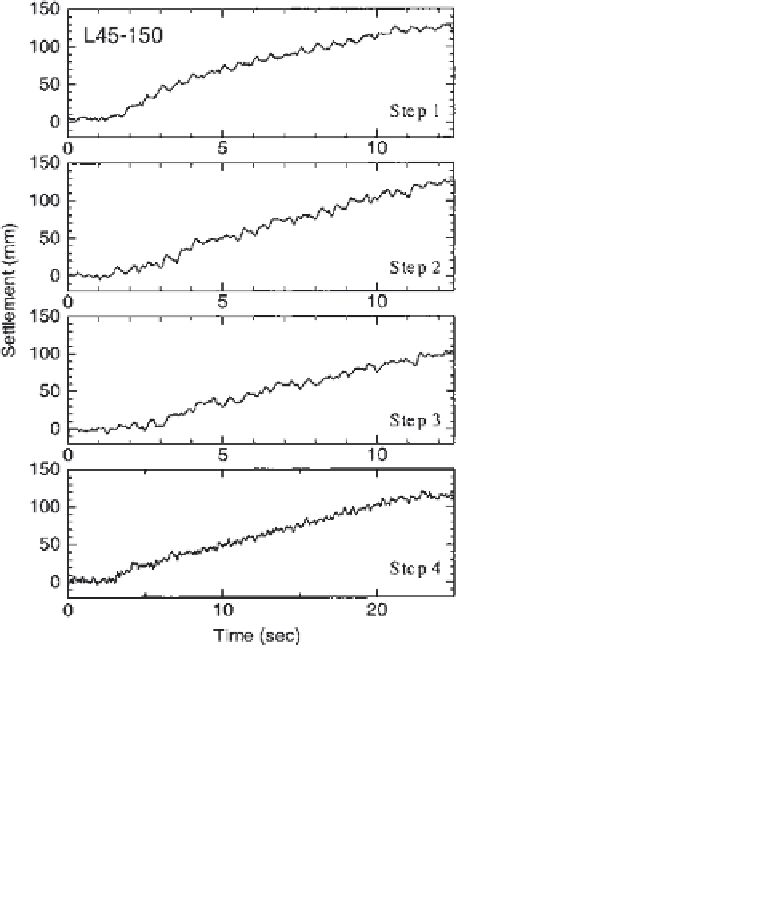Geoscience Reference
In-Depth Information
Figure 10
Time history of settlement at L1: L45-150. (Modified from Takahashi et al.,
2001.)
without showing any dramatic increase, even against the largest input waves.
This ductile dynamic behavior is one of the great advantages of this type of wall
against large earthquakes as many researchers point out, for example, Tatsuoka
et al. (1996) and Koseki et al. (1998). But it should be noted that no apparent
pullout failures and breakage of geogrids were observed in the test conditions.
Figure 11
shows incremental and total permanent horizontal displacements
of the wall faces at the height of 6.75 m (Laser1) and incremental and total
settlements of the walls at the shoulder of the wall (LVDT1). The accumulation
of the permanent displacements decreased as the length of the geogrids and the
1.4Mg/m
3
), the large translational movement occurred in the reinforced zone
with the geogrid of L
1.4 Mg/m
3
)with
¼
4.5 m, while for the dense cases (r
d
¼









Search WWH ::

Custom Search